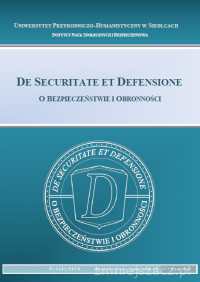Doctrinaire Schism and the Politics of Religious Sectarianism in Islam: Understanding the Root Cause of Sectarian and Religious Terrorism in the Middle-East and North Africa
DOI:
https://doi.org/10.34739/dsd.2022.01.12Keywords:
doctrine, schism, religious sectarianism, terrorism, Islam, MENAAbstract
The current difficulties and insurgency in Islamic states in the Middle East and North Africa (MENA) led this study to examine why this region has seen more volatility than any other region today. Furthermore, the unusual nature of the insurgency and turmoil in this region, particularly
where Muslims oppose Muslims and Muslim regimes, makes one ask what is the cause. As a result,
this study has attempted to analyze today’s Muslim divisions through the lens of schisms in doctrines
and beliefs, which always lead to sectarian divisions. This paper takes a historical journey into the past
to explore the origins of the schisms and their consequences. The emergence of many ulama (or Ayatollahs and Sheikhs) shortly after the Prophet’s death and over the centuries of Islamic religion, each with own claim to piety, teachings, and illuminations, has led to the emergence of many sects, each claiming to be more pious than the others and adhering to the precepts, teachings, and examples laid down in the Qur’an and set by Muhammad. The fundamental differences in ideas and interpretations are what have fueled and generated today’s sectarian and religious difficulties and instability in MENA. As a result, this instability may continue for many years to come, especially when one group sees the
others not only as apostates, but also as an infidels who are divinely intended to be exterminated.




